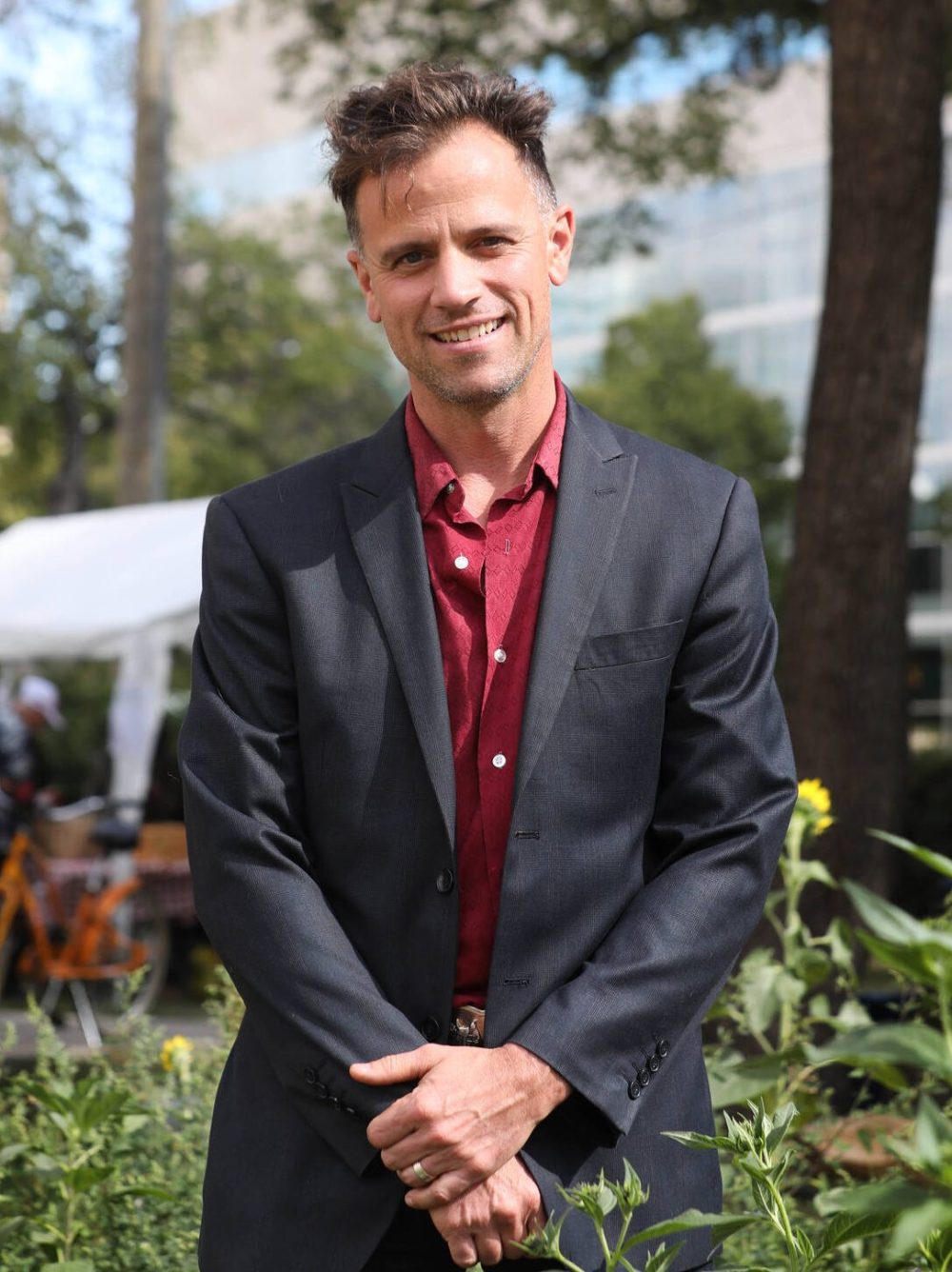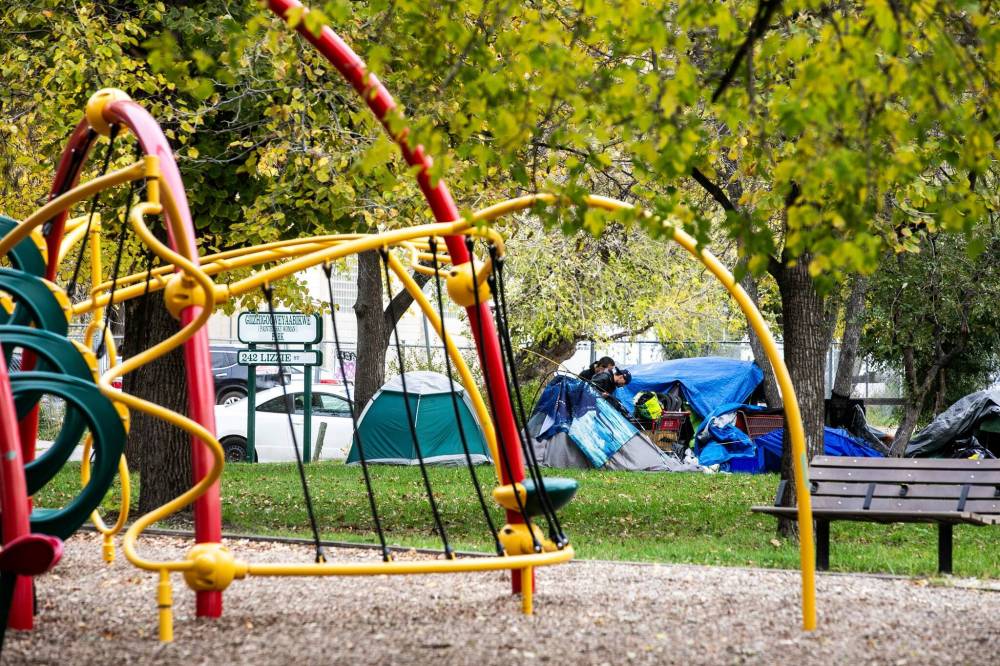City rolls out plan to remove camps from public spaces starting mid-November Co-ordinated approach called reasonable, compassionate
Read this article for free:
or
Already have an account? Log in here »
To continue reading, please subscribe:
Monthly Digital Subscription
$1 per week for 24 weeks*
- Enjoy unlimited reading on winnipegfreepress.com
- Read the E-Edition, our digital replica newspaper
- Access News Break, our award-winning app
- Play interactive puzzles
*Billed as $4.00 plus GST every four weeks. After 24 weeks, price increases to the regular rate of $19.00 plus GST every four weeks. Offer available to new and qualified returning subscribers only. Cancel any time.
Monthly Digital Subscription
$4.75/week*
- Enjoy unlimited reading on winnipegfreepress.com
- Read the E-Edition, our digital replica newspaper
- Access News Break, our award-winning app
- Play interactive puzzles
*Billed as $19 plus GST every four weeks. Cancel any time.
To continue reading, please subscribe:
Add Free Press access to your Brandon Sun subscription for only an additional
$1 for the first 4 weeks*
*Your next subscription payment will increase by $1.00 and you will be charged $16.99 plus GST for four weeks. After four weeks, your payment will increase to $23.99 plus GST every four weeks.
Read unlimited articles for free today:
or
Already have an account? Log in here »
Seven-hundred people were living in 100 homeless camps in Winnipeg two months ago, says a report that outlines the protocol to remove the sites from many public spaces, including playgrounds and schools.
In September, city council voted to prohibit encampments from transit shelters, playgrounds, pools, spray pads, recreation facilities, schools, daycares, adult care facilities, medians, traffic islands, bridges, docks, piers, rail lines and rail crossings, as well as wherever the camps obstruct traffic or pose a “life safety issue.”
RUTH BONNEVILLE / FREE PRESS FILES City of Winnipeg acting manager of community development, Greg MacPherson.
On Wednesday, the city released its policy and protocol to implement the new rules.
“Many encampments are quiet, peaceful, and self-regulating, but some pose significant risks to inhabitants, neighbours, infrastructure, and properties due to open fires, accumulation of flammable materials and refuse, human waste, noise, and unlawful behaviour,” writes Greg MacPherson, the city’s acting manager of community development, in the report.
The city received 972 encampment-related 311 calls between June 2024 and June 2025, MacPherson notes.
Enforcement of the new rules is set to be carried out primarily during daytime hours — one hour before sunrise to one hour after sunset.
However, the policy released Wednesday notes the encampment ban would actually be in effect at all times in the specified “sensitive” areas, with enforcement also prioritized at encampments at all other city properties during the daytime.
“We, as the City of Winnipeg, are responsible and mandated to take care of public spaces… so we’re doing our part to ensure that these spaces are available for families, seniors and kids to use and enjoy during the day, while also being mindful of the current situation of people who are unhoused who require a space to sleep at night,” said Coun. Vivian Santos (Point Douglas).
RUTH BONNEVILLE / FREE PRESS FILES Councillor Vivian Santos (Point Douglas).
Under the new protocol, a group known as an “encampment co-ordination table” will be led by community development staff. It will triage encampment-related requests, set priorities, and co-ordinate responses among city departments for non-emergency issues.
Winnipeg Fire Paramedic Service and Winnipeg Police Service would continue to separately respond to life safety and criminal matters at homeless camps.
The co-ordination table will include members from WFPS, public works, planning, property and development, WPS and Winnipeg Transit, at times with help from staff in other city departments, and report to the city’s chief administrative officer.
The group will prioritize encampment responses, based on three categories:
Level 1: Urgent co-ordinated responses to encampments that are deemed to pose an immediate risk to public safety, are located on or adjacent to sensitive public property (the prohibited locations) or obstruct essential services.
Level 2: Co-ordinated response to moderate risk or large encampments on non-sensitive properties with significant debris and other concerns, such as permanent unpermitted structures, illegal dumping, fuel spills, fire risk and other hazards.
Level 3: Monitored response to low risk and/or small encampments with minimal health, safety, or nuisance concerns located on non-sensitive public property.
Each level of encampment would receive a different type of response.
“We, as the City of Winnipeg, are responsible and mandated to take care of public spaces.”
After encampments are identified through 311 reports, an inspection, or are spotted by city staff, the co-ordination table would assess the risk and prioritize the site.
Level 1 sites would receive an inspection with enforcement staff, WFPS, and mobile outreach support workers. Outreach workers would offer supports and relocation options, while emergency services would respond if there is imminent danger.
The co-ordination table would then set “an appropriate notice period” prior to enforcing the rules and clearing the encampment.
MIKAELA MACKENZIE / FREE PRESS FILES An encampment by a playground at Alexander Avenue and Lizzie Street.
A similar process would occur at Level 2 sites, while the response to Level 3 ones would largely involve outreach, instead of encampment removal. Visits and risk assessments at those sites could happen on a weekly or biweekly basis.
In an interview, MacPherson said the work will be done within existing city budgets and staff.
“In some instances, if it’s listed as a Level 3, our resources are finite, so we’ll probably put our resources to higher priority sites,” he said.
The city will reallocate two bylaw enforcement officers and one senior coordinator to handle the work.
MacPherson said there are no set timelines for how much notice encampment residents will be given before the city shuts down a site.
“(We’ll) work in collaboration with our outreach partners to make sure that our approach is as reasonable to compassionate as possible… We’re going to try to get people to do this, to comply as quickly as we can,” he said.
The protocol is expected to take effect Nov. 17, unless city council directs otherwise.
Critics of the decision to ban encampments in many public spaces fear the policy will repeatedly displace vulnerable people.
Mayor Scott Gillingham stressed the city is still committed to securing affordable housing for people in need, but must also set limits on temporary shelters in public spaces.
“We can no longer allow encampments to set up just anywhere.”
“We need to find people housing with the wraparound supports… In the intervening time, we can no longer allow encampments to set up just anywhere,” said Gillingham.
Officials at Main Street Project, the city’s mobile homeless outreach provider, were not available for interviews Wednesday.
A request to speak with Tessa Blaikie Whitecloud, the province’s senior adviser on ending homelessness, was not granted Wednesday, with questions redirected to Housing Minister Bernadette Smith.
When asked if the city’s ban clashes with provincial efforts to reduce homelessness, Smith said the province and city are collaborating on their work.
“We’ve been working with the city. We want to keep public spaces public,” she said.
— with files from Carol Sanders
joyanne.pursaga@freepress.mb.ca
X: @joyanne_pursaga

Joyanne is city hall reporter for the Winnipeg Free Press. A reporter since 2004, she began covering politics exclusively in 2012, writing on city hall and the Manitoba Legislature for the Winnipeg Sun before joining the Free Press in early 2020. Read more about Joyanne.
Every piece of reporting Joyanne produces is reviewed by an editing team before it is posted online or published in print — part of the Free Press‘s tradition, since 1872, of producing reliable independent journalism. Read more about Free Press’s history and mandate, and learn how our newsroom operates.
Our newsroom depends on a growing audience of readers to power our journalism. If you are not a paid reader, please consider becoming a subscriber.
Our newsroom depends on its audience of readers to power our journalism. Thank you for your support.

